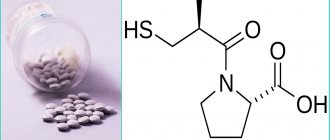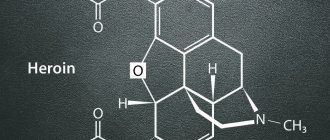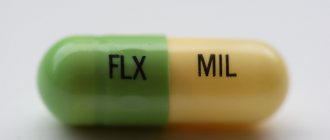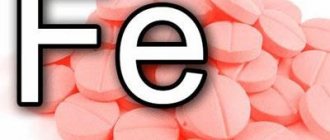01.11.2019
In the modern world, where synthetic drugs are increasingly ruling the roost, it is no longer so common to meet those who like to smoke hashish. However, it is too early to completely write off this type of narcotic product, and therefore patients who urgently need detoxification after hashish are periodically admitted to drug treatment centers. h2: What is hashish?
Hashish is the dried and crushed leaves of the top of hemp (lat. Cannabis), mixed with hemp resin (a special resinous liquid with which the plant protects itself from negative environmental factors).
Hashish is often identified with marijuana, which is incorrect, since marijuana is the dried and crushed raw material obtained from the entire hemp plant - stem, leaves, inflorescences and even seeds. The psychoactive effect of hashish is much stronger than that of marijuana, and then it causes much more harm to health.
Hashish overdose
Immediately after smoking hashish, drug intoxication develops, which lasts 2-4 hours. The severity of symptoms depends on the amount of substances taken. When using a high dose of the drug, complications develop that can lead to death.
It has been experimentally established that the minimum addictive dose of hashish is 50 mcg of tetrahydrocannabinol (THC) per 1 kg of weight. The psychotropic effect occurs as a result of taking 150-200 mcg/kg. Doses of 300 mcg/kg and above cause severe mental disorders.
The main danger is that hashish is often added to chemicals that enhance the effect of the drug. As a result, the symptoms of an overdose are significantly worse, as is subsequent treatment.
The state of intoxication after smoking a cigarette is accompanied by increased mobility, high spirits, and uncontrollable laughter.
After 3-4 hours the person becomes drowsy and completely indifferent to everything that is happening. However, the condition resulting from an overdose occurs differently; manifestations of severe poisoning are often added to it.
A person suffers from vomiting, dizziness, and cough. In parallel, acute psychosis can develop, in which life-threatening hallucinations and panic appear.
The patient completely loses temporal and spatial orientation. He begins to pose a threat to his own life and the safety of others. He requires immediate medical attention.
About the dangers of hashish
Even one-time smoking of hashish causes the following alarming symptoms:
- arrhythmia (most often tachycardia);
- increased blood pressure;
- deterioration of liver function;
- tremor and muscle hyperreflexia;
- cerebrovascular accident;
- decreased memory, intellectual and cognitive abilities.
Systemic drug use significantly increases the risk of cardiovascular and bronchopulmonary diseases, cerebral edema, cancer, metabolic disorders, as well as the development of hallucinatory-paranoid psychoses.
How to recognize
The condition resulting from an overdose of hashish is very dangerous. The person is in an excited state, his heart rate and blood pressure increase greatly. The patient becomes very aggressive, epileptic seizures are possible.
The following signs can help others identify a marijuana overdose:
- dilated pupils that do not respond to light;
- red face;
- dry mucous membranes;
- increased appetite;
- hoarse voice;
- rapid pulse;
- high pressure;
- heartache;
- cramps and trembling in the body;
- chills and fever;
- delirium, obsessive thoughts;
- anxiety;
- lack of response to stimuli;
- drowsiness.
The excited state is quickly replaced by auditory and visual hallucinations, in which the person is often haunted by danger. It may even seem to him that he is already dead.
The patient's mood during an overdose is unpredictable and changes very quickly. He can be cheerful, laugh, and the next second - fall into horror for no reason. It becomes useless to talk with a person: he answers questions inappropriately, his facial expressions become inadequate.
An overdose of hashish causes severe mental disorders, due to which the patient becomes socially dangerous and can harm someone close to him or himself. He doesn’t recognize anyone, and instead of his acquaintances he sees some evil people who are trying to offend him. For this reason, the patient becomes very aggressive, and it is almost impossible to calm him down.
As intoxication develops, hallucinations and panic attacks develop. At the same time, the perception of time is distorted - it begins to flow more slowly.
The listed symptoms persist for a long time, and clear consciousness returns to the person only after a few days. After normalization of health, the patient has almost completely no memory of previous events. Memories are fragmentary; hallucinatory and real experiences are intertwined in them.
Signs of hashish use
The first symptom of a bad habit will be a loss of interest in everything that previously interested the person. All friends and acquaintances, hobbies fade into the background and are completely forgotten over time.
Against the backdrop of hashish addiction, the usual expression of emotions completely changes. A person becomes unable to empathize, show participation and attention. In addition, signs of smoking hashish include:
- The emergence of alienation. Contacts with friends are lost, the addict withdraws from any attempt at communication.
- Changes in facial expressions, which become much less expressive. The hashishist loses his former emotionality.
- The appearance of a feverish shine in the eyes. Another symptom is a change in skin color, which becomes much paler.
- Loss of habitual skills, such as personal hygiene. The addict completely loses shame, he is indifferent to the opinions of others.
- Development of aggressive reactions towards loved ones or family members. Cruelty can also be directed at strangers.
Another noticeable effect of hashish is the development of compulsive disorder, namely the occurrence of obsessive movements. We are talking about constantly repeating the same movements with hands and fingers. Often the state of a hashishist is accompanied by obsessive thoughts.
First aid
When the first signs of an “overdose” of hashish appear, you must immediately call an ambulance. Until the doctors arrive, the patient should be given first aid.
As the person becomes aggressive and dangerous, you need to try to calm him and fix him. In case of fainting, the patient must be placed on the bed and checked to see if he is breathing. If not, the person requires chest compressions and artificial respiration.
These measures will help wait for doctors to hospitalize the patient in a medical facility. In the absence of first aid, the victim may die from cardiac arrest.
How much marijuana does it take to overdose?
The narcotic activity of marijuana is determined by its tetrahydrocannabinol (THC) content. The threshold dose of the drug that causes the development of a psychoactive effect is 50 mg/kg body weight. Signs of an overdose of marijuana occur in cases where this dose is exceeded by at least 3 times and amounts to 150–200 mg/kg.
An hour after use, the concentration of the drug in the blood reaches its maximum, and the narcotic effect can last up to 6 hours, which depends both on the THC content of marijuana and on the method of its use.
THC quickly binds to blood proteins and then spreads throughout the body through the bloodstream. In case of overdose, this leads to some changes in metabolic and biochemical processes, which, in turn, causes disturbances in the synthesis of DNA, RNA and protein molecules. As a result, the activity of organs changes, functional disorders of the nervous system arise (impaired motor activity and thought processes, mental disorders).
THC disrupts the mechanism of production, release and destruction of the neurotransmitter acetylcholine, which is responsible for the transmission of neuromuscular impulses. Acetylcholine plays an important role in the functioning of the parasympathetic nervous system, which is responsible for the functioning of the heart and a number of other internal organs. Therefore, with an overdose of marijuana, victims experience pain in the heart area, increased blood pressure, up to the development of a hypertensive crisis. Impaired acetylcholine metabolism, in turn, causes dysfunction of the digestive system, lungs, and salivary glands. The innervation of the iris of the eyeball is disrupted.
Until recently, it was believed that death from an overdose of marijuana was impossible, since this would require a dose 40,000 times higher than the average narcotic dose. However, in 2014, a group of scientists from the University Hospital of Dusseldorf, led by Professor Benno Hartung, conducted a study, the results of which showed that an overdose of Indian marijuana can cause atrial fibrillation, leading to thrombus formation in the coronary arteries. It was this process that caused extensive myocardial infarction and death in two patients of the clinic, whose ages were 28 years and 23 years.
Treatment
When providing emergency care for a hashish overdose, the most important measures are:
- Ensuring airway patency.
- Elimination of coma.
- Anticonvulsant therapy.
- Emergency decrease in temperature (with hyperemia).
- Correction of mental disorders.
In case of severe tachycardia, the patient is prescribed beta-blockers. To increase his blood pressure, he is given a drip with an electrolyte solution. If this does not help and collapse occurs, the person is given loading doses of dobutamine.
Effect of marijuana on the body
The activity of the drug is determined by the content of THC (tetrahydrocannabinol). The threshold dose is 50 mg/kg body weight. Signs of intoxication appear when consuming 150–200 mg. THC at a dose of 300–400 mg causes confusion and hallucinations. Symptoms of overdose appear if the dose is exceeded by at least 2 times. The maximum concentration of marijuana in the blood is reached after 1 hour 10 minutes. The effects last up to 6 hours, depending on how the marijuana is consumed and the amount of THC in it.
THC enters the bloodstream, where it binds to plasma proteins or is delivered to cells. Marijuana primarily affects the brain. Cannabis poisoning is the result of changes in biochemical and metabolic processes in the body. In this case, the synthesis of RNA, DNA, and proteins is disrupted. The activity of cells changes, some functions of the body are suppressed: thought processes are disrupted, motor activity changes, and mental disorders are characteristic. In addition, cannabinoids stimulate the production of serotonin: mood improves and euphoria appears.
Consequences
An overdose of hashish leads to serious consequences and complications. There are no official statistics on the number of deaths. However, there is evidence from some researchers that blood clots form in people with this condition.
Death often occurs as a result of myocardial infarction. In addition, with acute psychosis, people often attempt suicide without realizing their actions.
Also, as a result of cannabinoid poisoning, acute psychosis develops and the schizophrenic process starts. Personality changes lead to mental discomfort and problems with social adaptation. In order to restore a formal connection with people and cheer up, a person, after leaving the hospital, starts smoking hashish again.
As a result, mental disorders only get worse. The patient's behavior becomes asocial, and personal disadaptation occurs.
Signs of the schizophrenic process develop very quickly - thinking disorders, emotional and volitional disorders. A person begins to degrade socially. Therefore, all statements that marijuana is an easy and harmless drug do not stand up to criticism.
Stages of hashish addiction
Narcologists distinguish three successive stages. They differ in the severity of symptoms and progression of addiction.
At the first stage of using a drug, addiction to it develops. If the next dose of hashish is missing, the person becomes agitated and irritated.
Characterized by a gradual increase and formation of mental dependence on the drug.
The presented stage is reversible and most easily treatable. However, convincing a hashishist to give up his addiction is extremely difficult. The drug addict believes that hashish is a light weed that does not cause any harm to his health.
Features of the second stage of hashish addiction:
- Develops after three to four years of drug use.
- After each new dose of hashish, a person becomes more relaxed and joyful. Such emotions make you want to get a portion of the “grass” again.
- The duration of euphoria gradually decreases, instead the mood worsens, fatigue and apathy occur.
At this stage, you have to take portions of hashish constantly. Without this, a person cannot live as usual, nor can he eat or sleep. Thus, physical dependence on the substance develops. The hashishist is increasingly immersed in an illusory world, which consists of fictitious ideas and beliefs that only he understands. This indicates the emergence of mental disorders.
The third stage occurs after eight to nine years of systematic use of hashish. The harm from the addiction becomes obvious. The absence of a new dose of hashish is manifested by withdrawal syndrome (withdrawal), pronounced physical problems, and the development of asociality. Against this background, a person can even commit any crime to get a new dose. Given the serious damage to the brain and other organs and systems, the addict will remain disabled.











